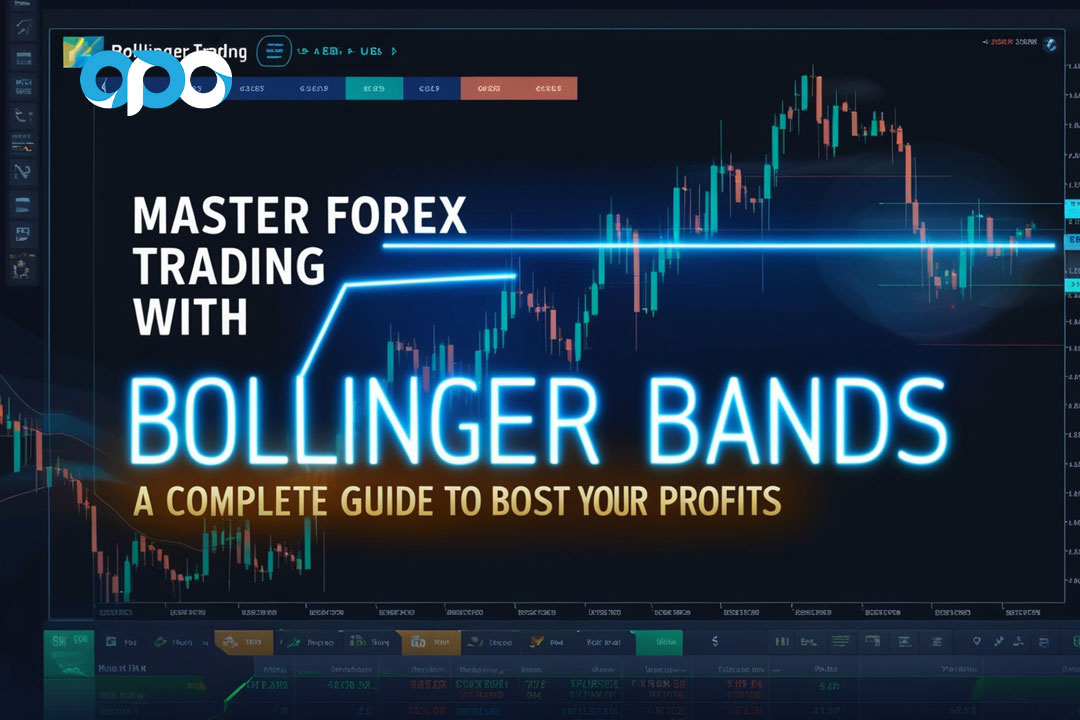Unemployment claims are a pivotal economic indicator in the financial markets, particularly in forex trading. They offer real-time insights into the health of the labor market and have a significant impact on currency prices. For forex traders, understanding the dynamics behind unemployment claims and how they influence the forex market is crucial for developing effective trading strategies. In this article, we will provide a detailed guide on how to trade unemployment claims in forex, including the influence of jobless claims on currency values, key indicators for predicting unemployment trends, and actionable strategies for forex traders.
We will also discuss how to trade unemployment rate data, which is closely related to jobless claims and has similar market-moving potential. By learning how to interpret these economic reports, forex traders can position themselves to capitalize on the volatility that often accompanies these releases. Whether you are trading through a regulated forex broker or exploring various platforms, mastering unemployment claims data can help you improve your trading results.
Introduction to Unemployment Claims in Forex Trading

Unemployment claims are one of the most closely watched economic indicators in the forex market. These reports provide insight into the state of the labor market, which is a crucial component of overall economic performance. For traders, knowing how to trade unemployment claims in forex can help them make better trading decisions based on the market’s reaction to these reports.
In forex trading, unemployment claims are particularly important because they are released on a weekly basis, providing frequent and up-to-date information about the health of the economy. Unlike other economic indicators that are released monthly or quarterly, jobless claims allow traders to assess short-term trends in the labor market. As a result, these reports often lead to increased volatility in the forex market, presenting both risks and opportunities for traders.
In this article, we will explore how to use unemployment claims reports in your trading strategies, including techniques for predicting jobless claims data, assessing market reactions, and timing your trades based on these reports. Additionally, we will discuss the relationship between unemployment claims and the unemployment rate, explaining how to trade unemployment rate data in forex for maximum profitability.
Types of Jobless Claims
There are two main types of jobless claims that forex traders should be familiar with: initial jobless claims and continuing jobless claims. Both of these data points provide important insights into the state of the labor market, but they serve different purposes.
Initial Jobless Claims
Initial jobless claims refer to the number of people who file for unemployment benefits for the first time. This report provides a snapshot of layoffs in the economy and is one of the earliest indicators of changes in employment trends. Higher initial jobless claims usually signal a weakening labor market, which can negatively affect consumer spending, business investment, and overall economic growth. As a result, currencies of countries with rising initial claims may depreciate.
Traders often watch for significant deviations from expectations in initial jobless claims data to anticipate market movements. For example, if the actual number of initial claims is higher than forecasted, traders may anticipate that the central bank will implement policies to stimulate the economy, which could lead to a depreciation of the national currency. In such cases, forex traders might take a bearish stance on the currency pair associated with the country’s economy.
Continuing Jobless Claims
Continuing jobless claims represent the number of individuals still receiving unemployment benefits after their initial claim. This data reflects the ongoing state of the labor market and provides insights into how long people are remaining unemployed. When continuing jobless claims decrease, it indicates that people are finding jobs, which suggests an improving labor market and a strengthening economy.
For forex traders, a decline in continuing jobless claims can lead to a bullish outlook on the currency, as an improving labor market usually signals economic growth. However, if continuing claims remain high or rise unexpectedly, it could indicate that economic recovery is stalling, which could weaken the currency.
Incorporating both initial and continuing jobless claims into your analysis can provide a more comprehensive view of the labor market and help you make more informed trading decisions.
Impact of Jobless Claims on Forex Markets

Unemployment claims reports have a direct and immediate impact on the forex markets. These reports provide insights into the overall health of the economy, influencing monetary policy decisions and, in turn, currency values. When unemployment claims rise, it typically signals a weakening economy, which can lead to a decline in the value of the country’s currency. Conversely, when unemployment claims decrease, it suggests economic strength, which can bolster the currency.
How Jobless Claims Data Influences Currency Values
The relationship between jobless claims and currency values is primarily driven by investor sentiment and central bank policy. When jobless claims rise, it indicates that more people are losing their jobs, which can reduce consumer spending, slow down economic growth, and increase the likelihood of monetary easing by the central bank. Lower interest rates usually result in a weaker currency because investors seek higher returns elsewhere.
On the other hand, when jobless claims fall, it signals an improving labor market, which can boost consumer confidence and spending. This, in turn, can lead to stronger economic growth and potentially higher interest rates, attracting foreign investment and strengthening the national currency.
For forex traders, understanding the link between jobless claims and currency movements is essential for making informed trading decisions. Traders who anticipate how the market will react to jobless claims data can position themselves to profit from the resulting volatility.
Historical Examples of Market Reactions to Jobless Claims Announcements
There are numerous historical examples of how jobless claims reports have impacted forex markets. By studying these examples, traders can gain a better understanding of how unemployment claims data affects currency values and can use this knowledge to inform their trading strategies.
1. The 2008 Financial Crisis
During the 2008 financial crisis, unemployment claims in the United States surged as companies laid off workers in response to the economic downturn. The sharp rise in jobless claims contributed to a weakening of the U.S. dollar as investor confidence in the U.S. economy plummeted. Traders who were able to anticipate this downturn based on rising unemployment claims could have profited from shorting the U.S. dollar against other currencies.
2. Post-Pandemic Recovery (2021)
In 2021, as the U.S. economy began recovering from the COVID-19 pandemic, unemployment claims steadily decreased. This improvement in the labor market helped strengthen the U.S. dollar against other major currencies, as traders anticipated economic growth and potential interest rate hikes by the Federal Reserve. Those who were able to accurately forecast the decline in jobless claims were well-positioned to profit from the dollar’s appreciation.
Studying historical patterns in jobless claims data and currency reactions can help traders develop more effective strategies for trading unemployment claims.
Trading Strategies Based on Unemployment Claims

When it comes to how to trade unemployment claims in forex, there are several strategies that traders can use to capitalize on market volatility. Unemployment claims reports often lead to sharp movements in currency prices, providing opportunities for traders to profit from these fluctuations.
Slingshot Strategy
The Slingshot Strategy is a momentum-based trading technique that involves capitalizing on the sharp price movements that occur after the release of unemployment claims data. In this strategy, traders wait for the initial market reaction to the jobless claims report and then enter a position in the direction of the movement. The idea is to ride the momentum created by the market’s reaction to the data.
For example, if jobless claims come in lower than expected, indicating an improving labor market, traders may go long on the currency, expecting further upward momentum. Conversely, if jobless claims are higher than expected, traders may short the currency, anticipating continued bearish momentum.
This strategy works best when there is a significant surprise in the data, either better or worse than expected. Traders who are quick to react can capitalize on the momentum before the market stabilizes.
Trading on Expectations
The forex market often moves based on expectations, and unemployment claims reports are no exception. Traders may position themselves ahead of the release of jobless claims data based on forecasts and analyst predictions. This is known as the “buy the rumor, sell the fact” approach, where traders take positions based on expectations before the report is released and then close those positions once the actual data is made public.
For instance, if unemployment claims are expected to decrease, indicating an improving labor market, traders might buy the currency pair ahead of the report’s release. Once the data is released, and if it matches or exceeds expectations, traders might sell their position to capture profits from the initial market reaction.
Trading Spikes
Another popular strategy for trading unemployment claims is trading spikes. This strategy involves taking advantage of the sharp price spikes that occur immediately after the release of jobless claims data. These spikes are caused by the initial reaction of the market to the data, which often leads to a surge in volatility.
In this strategy, traders enter positions immediately after the data is released, looking to profit from the rapid price movement. However, this strategy requires quick decision-making and strong risk management, as the volatility can lead to sudden reversals. Traders should use tight stop-loss orders to protect their positions in case the market moves against them.
Forecasting Unemployment Claims

One of the keys to successfully trading unemployment claims is being able to forecast the data accurately. While it is impossible to predict jobless claims with complete certainty, there are several key indicators and economic reports that traders can use to make informed predictions about the direction of unemployment trends.
Key Indicators for Predicting Jobless Claims Trends
- Non-Farm Payrolls (NFP): The NFP report is one of the most closely watched indicators of employment trends in the U.S. economy. A strong NFP report often correlates with a decrease in jobless claims, as more people are employed. Conversely, a weak NFP report can signal an increase in unemployment claims in the following weeks.
- ADP Employment Report: The ADP report provides insights into private-sector employment trends and can be used as a leading indicator for jobless claims. A strong ADP report often precedes a decrease in jobless claims, while a weak report may signal a rise in claims.
- Business Sentiment Surveys: Surveys such as the ISM Manufacturing and Non-Manufacturing PMIs can provide insights into business sentiment and hiring trends. When businesses are optimistic about the economy, they are more likely to hire workers, leading to a decrease in jobless claims.
- Consumer Confidence Index: Consumer confidence is another important indicator for predicting jobless claims. When consumer confidence is high, people are more likely to spend money, which boosts economic activity and employment. A rise in consumer confidence can lead to a decrease in jobless claims.
By monitoring these key indicators, traders can gain a better understanding of the potential direction of jobless claims and position themselves accordingly.
Market Reactions to Jobless Claims Reports: Detailed Analysis

Understanding the nuanced market responses to jobless claims data is crucial for successful forex trading. Let’s delve deeper into typical market reactions and their implications:
Better-Than-Expected Claims (Lower Numbers)
When jobless claims come in lower than anticipated, it generally signals a strengthening economy. Here’s a detailed breakdown of potential market reactions:
- USD Reaction:
- Immediate Impact: The USD typically strengthens against other major currencies.
- Pairs to Watch: EUR/USD, GBP/USD often see immediate downward pressure.
- Magnitude: The extent of USD strengthening can depend on how much better the data is compared to expectations.
- Equity Markets:
- Often see a positive reaction, which can influence risk sentiment in forex.
- Correlation Effect: A rise in U.S. equities can lead to strength in risk-sensitive currencies like AUD and NZD.
- Bond Yields:
- May rise, further supporting the USD.
- Impact on Carry Trades: Higher yields can make the USD more attractive for carry trades, potentially affecting pairs like USD/JPY.
- Commodity Currencies:
- Currencies like AUD, CAD, and NZD might strengthen alongside the USD due to improved global economic outlook.
- Safe-Haven Currencies:
- JPY and CHF might weaken as investors move away from safe-haven assets.
Worse-Than-Expected Claims (Higher Numbers)
Higher-than-anticipated jobless claims can signal economic weakness. Here’s how markets might react:
- USD Reaction:
- Immediate Impact: Usually weakens against major currencies, particularly safe-havens.
- Pairs to Watch: EUR/USD, GBP/USD might see upward movement.
- Emerging Markets: USD might paradoxically strengthen against some emerging market currencies due to risk-off sentiment.
- Equity Markets:
- May experience a sell-off, potentially leading to risk-off sentiment in forex.
- Correlation Effect: Weakening equities could lead to strength in safe-haven currencies like JPY and CHF.
- Bond Yields:
- Might fall as investors seek safety, putting additional pressure on the USD.
- Impact on Interest Rate Expectations: Lower yields could reduce expectations of Fed rate hikes, further weakening the USD.
- Commodity Currencies:
- Often face selling pressure due to concerns about global economic growth.
- Oil Prices: Watch for potential impacts on oil-sensitive currencies like CAD if oil prices react to the data.
- Gold:
- Might see increased demand as a safe-haven asset, potentially strengthening gold-correlated currencies like AUD.
Correlation with Broader Economic Conditions
Understanding how jobless claims data fits into the broader economic picture is crucial for forex traders:
- GDP Growth:
- Persistent Trends: Consistent declines in jobless claims often correlate with stronger GDP growth, supporting the domestic currency.
- Leading Indicator: Jobless claims can sometimes signal GDP trends before official GDP data is released.
- Inflation Expectations:
- Wage Pressure: Lower unemployment typically leads to wage growth and increased inflation expectations.
- Central Bank Policy: Influences on inflation expectations can affect central bank policies, a key driver of forex markets.
- Consumer Spending:
- Economic Cycle: Improved employment conditions usually boost consumer spending, which can strengthen the domestic currency in the long term.
- Retail Sales Correlation: Watch for confirmation of employment trends in subsequent retail sales data.
- Business Investment:
- Confidence Indicator: Declining jobless claims can signal increased business confidence, potentially leading to more investment.
- Currency Impact: Increased business investment often strengthens the domestic currency due to capital inflows.
- Global Economic Sentiment:
- Ripple Effects: As the world’s largest economy, U.S. jobless claims can influence global economic sentiment.
- Currency Baskets: Consider the impact on currency baskets or indices that include the USD.
Opofinance Services: Your Trusted ASIC Regulated Broker
Discover the benefits of trading with Opofinance, an ASIC regulated broker that prioritizes your safety and success. With a commitment to transparency and compliance, Opofinance offers a secure trading environment, ensuring that your investments are protected.

One of the standout features of Opofinance is its innovative social trading service. This unique platform allows traders to connect, share insights, and replicate the strategies of successful investors. Whether you’re a novice looking to learn from experienced traders or a seasoned pro seeking to diversify your portfolio, Opofinance’s social trading feature empowers you to make informed decisions and enhance your trading experience.
Additionally, Opofinance is proudly featured on the MT5 brokers list, providing you with access to advanced trading tools and resources. Enjoy the convenience of safe and efficient deposits and withdrawals, designed to ensure that your trading journey is as smooth as possible.
Join Opofinance today and experience a reliable, user-friendly trading platform that is dedicated to helping you achieve your financial goals!
Conclusion
Unemployment claims and the unemployment rate are two of the most important economic indicators for forex traders. By understanding how to trade unemployment claims in forex and interpreting labor market data effectively, traders can position themselves to capitalize on the volatility that often accompanies these reports. Whether using momentum-based strategies like the Slingshot Strategy or forecasting jobless claims using key economic indicators, incorporating labor market data into your trading approach can lead to more informed and profitable trades.
Before you start trading unemployment claims, it’s crucial to choose a reliable and regulated broker to ensure safe and efficient transactions. Opofinance, an ASIC-regulated broker, provides a robust platform for forex trading with access to various economic reports, including unemployment claims. With its MT5 platform, social trading features, and secure deposit/withdrawal methods, Opofinance offers a comprehensive solution for traders looking to navigate the complexities of forex trading based on labor market data.
What are unemployment claims in forex trading?
Unemployment claims refer to the number of people filing for unemployment benefits. Forex traders use this data to assess the health of the labor market and predict currency movements.
How does the unemployment rate affect currency values in forex?
A high unemployment rate typically weakens the currency due to lower consumer spending and economic activity. Conversely, a low unemployment rate can strengthen the currency by signaling economic growth and potential interest rate hikes.
What is the Slingshot Strategy for trading unemployment claims?
The Slingshot Strategy involves capitalizing on the market’s momentum after the release of unemployment claims data, allowing traders to profit from short-term price movements in the forex market.








